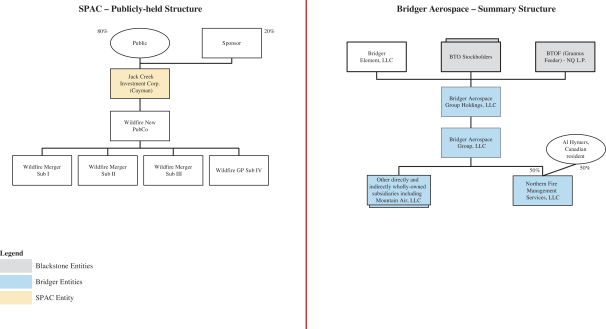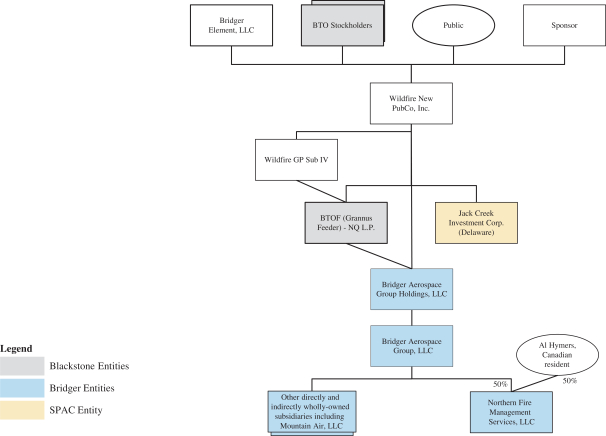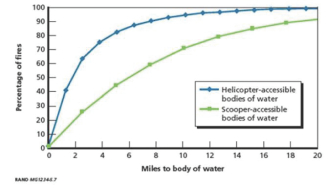interest income on investments held in the Trust Account. We incur expenses as a result of being a public company (for legal, financial reporting, accounting and auditing compliance), as well as
for due diligence expenses.
For the nine months ended September 30, 2022, we had a net income of $3,834,467, which consists of the
change in fair value of warrant liabilities of $7,456,670, change in fair value of convertible note of $130,900, interest income on investments held in the Trust Account of $2,060,045, offset by operating costs of $5,813,148.
For the year ended December 31, 2021, we had a net income of $15,113,643, which consists of the change in fair value of warrants of
$22,422,330, interest income on investments held in the trust account of $68,571 and a loss on issuance of private warrants of $3,948,000 offset by operating costs of $3,429,258.
Liquidity and Capital Resources
On
January 26, 2021, we consummated the Initial Public Offering of 34,500,000 JCIC Units which includes the full exercise by the underwriter of its over-allotment option in the amount of 4,500,000 JCIC Units, at $10.00 per JCIC Unit, generating
gross proceeds of $345,000,000 which is described in Note 3. Simultaneously with the closing of the Initial Public Offering, we consummated the sale of 9,400,000 JCIC Private Placement Warrants at a price of $1.00 per JCIC Private Placement Warrant
in a private placement to the Sponsor, generating gross proceeds of $9,400,000, which is described in Note 4.
For the nine months
ended September 30, 2022, cash used in operating activities was $837,509. Net income of $3,834,467 was affected by interest earned on investments held in the Trust Account of $2,060,045, the change in the fair value of the warrant liabilities of
$7,456,670 and change in fair value of convertible note of $130,900. Changes in operating assets and liabilities provided $4,975,639 of cash from operating activities.
For the year ended December 31, 2021, cash used in operating activities was $1,752,236. Net income of $15,113,643 was affected by
interest earned on investments held in the trust account of $68,571, the change in the fair value of the warrant liability of $22,422,330, loss on initial issuance of private warrants of $3,948,000 and transaction costs associated with the warrants
issued at the Initial Public Offering of $1,360,701. Changes in operating assets and liabilities provided $316,321 of cash from operating activities.
As of September 30, 2022 and December 31, 2021, we had marketable securities held in the Trust Account of $347,128,616 (including
$2,128,616 of interest income and realized gains) and $345,068,571 (including approximately $69,000 of interest income and realized gains), respectively, consisting of money market funds invested in U.S. Treasury Bills with a maturity of 185 days or
less. We may withdraw interest from the Trust Account to pay taxes, if any. We intend to use substantially all of the funds held in the Trust Account, including any amounts representing interest earned on the Trust Account (less income taxes
payable), to complete our business combination. To the extent that our capital stock or debt is used, in whole or in part, as consideration to complete our business combination, the remaining proceeds held in the Trust Account will be used as
working capital to finance the operations of the target business or businesses, make other acquisitions and pursue our growth strategies.
As of September 30, 2022 and December 31, 2021, we had cash of $52,411 and $89,920, respectively. We intend to use the funds held outside
the Trust Account primarily to perform business due diligence, travel to and from Bridger’s offices, review corporate documents and material agreements, and structure, negotiate, and complete the Business Combination with Bridger.
We do not have any long-term debt, capital lease obligations, operating lease obligations or long-term liabilities, other than an agreement to
pay an affiliate of the Sponsor up to $10,000 per month for office space, secretarial and administrative services. Upon completion of a business combination or its liquidation, JCIC will cease paying these monthly fees.
200








